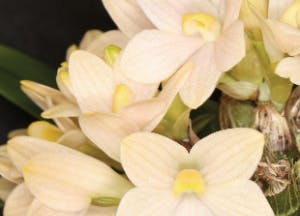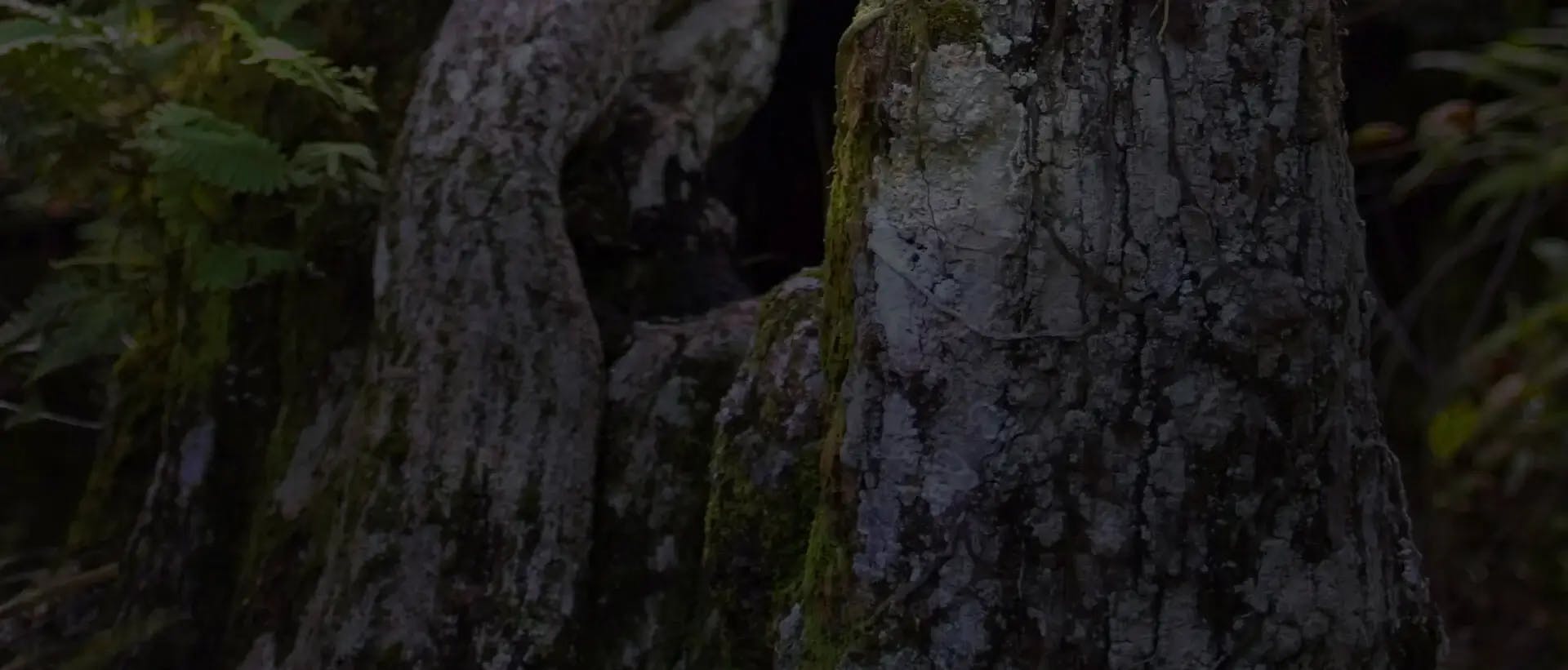
We all know that orchids are spectacular and addictive plants with seemingly unending variety. Have you ever thought of trying a different method of growing your orchids? Here is my orchid hobbyist journey:
I learned, many years ago, that in a drier climate (my former home state of Montana), orchids adapt to a semihydroponic system quite readily. I will admit I am a bit stubborn and found it terribly onerous to be schlepping my ever-growing collection to the kitchen sink for watering, subsequent draining and back. This feeling was especially true after I expanded my growing areas to the windows of my children’s upstairs bedrooms after they left for college. Even after I moved to Minnesota in 2011, the Land of 10,000 Lakes and often tropical-level humidity in the summer months, most of my plants still enjoy this method of growing.
[1–2] Images of the author’s sunroom where her plants are wintered.


I observed that some of my local fellow orchid growers had some fairly dry, desiccated plants that did not look at all happy. I guessed that they were watered weekly (as is advised), with the water poured through the pot for a few seconds and out onto the tray it went. I wondered if I could grow them differently. If the pots did not drain, I would not have to bring them by two and three at a time to the sink for watering once a week— they could be watered in place. It was getting to be a chore that was interfering with my love for the plants. But would they drown? The standard culture advice says that orchid plants must (MUST) be free-draining, with lots of air circulation at the roots. How about if I monitor the amount of water going into the pot — not too much, but maybe a 1⁄4 or 1⁄2 inch or so sitting in the bottom. Would that increase humidity too?
I started repotting into nondraining vessels that were on hand — old art pottery, milk glass flower pots, and even some odd, hand-thrown pottery experiment pieces, and all merely for my convenience. They were easily obtained from my vintage pottery collection (only the basically
worthless chipped ones), thrift stores, and garage sales. Another bonus was that they added extra visual interest to my collection. And best of all, I did not have to run up and down the stairs!
Within a few months, I noticed a decided difference. My plants were looking fuller, and happier. They were enjoying more regular access to water, and I was learning how to tell when they needed more. You can lift the pot and usually assess its needs, but you can also check for “sloshing.” If you hear any water, wait another week. If the pot is light in weight, it needs to be watered. If I am unsure, I pull out the tag and feel it for moisture on my cheek.
[3] The author’s orchids are enjoying their summer sojourn on the deck.

Now that I live in Minnesota, most of my collection goes out on my deck (summer camp) sometime in May. I chomp at the bit for the overnight temps to get above 52 F (11.1 C) consistently so that I can start The Great Migration. This usually begins around the middle of May, and they come back inside around the middle of September. That gives my plants four glorious months of dappled sunlight, rain, humidity, summer breezes, and an even greater day-to-night temperature differential than I can provide in my sunroom during the cold months. Sometimes that also includes summer hail and tornadoes, but that is why I do not take trips during these months. I need to be home with an eye on the sky in case a quick stowing of plants under cover is required. On the days when it rains all day or all night, I will come out and find all of my plants filled to the rim with rainwater. I used to worry about this, but I see the roots that are visible near the surface of the pots are fat and green. I go about “dumping orchids” (just the water, of course!), and I do not believe they have suffered in any way. They love a good soak in rainwater. It helps to flush fertilizer salts, too.
I like to repot often. That way, I am keeping a close eye on the health of my collection, especially given my more unorthodox method. Of course, we know that healthy roots are the cornerstone of orchid health. During the winter months, I use water purified by reverse osmosis (RO) that has been put through an oxygen-enhancing system, given the closed environment of my plants’ roots. I also use medium-size fir bark, medium sponge rock and charcoal as my fairly chunky media mix. That helps to keep air at the roots, and the charcoal helps keep the bit of water at the bottom “sweeter.” A ceiling fan runs constantly in the sunroom.
In my 28 years of experimenting with this method, I have also learned that some orchids definitely do not like it. One example is the tolumnias. I had a “thing” for them about 15 years ago. I bought about eight or 10 in one year, all different colors. I thought they were the cutest little plants with a rainbow of colors and big flowers. And of course, I put them in small pots without drainage (did I mention that I am stubborn?) Well, that was a disaster. It took about another year or two, but one by one, they all went to orchid heaven. That genus definitely does not like this method!
So, what DO I grow with this method? Paphiopedilums and phragmipediums work well. So do most cattleyas (the hybrids in particular). Some of the species of orchids say in cultural descriptions that they do best mounted, so that is a clue they will not do well if they do not drain quickly. There are also many species that like a moist environment. For example, I have a large Dendrochilum wenzelii in my collection that LOVES its 12-inch (30 cm) diameter, 4-inch (10 cm) tall pot that I keep well-watered. Last spring it put out over 100 inflorescences, so I know it is happy. I also have a very large Dendrobium hancockii in a similar pot. I make sure to dry that one out from time to time though, not allow it to remain constantly moist, for best blooming.
Yet another advantage of this method of orchid growing is in the application of fertilizer and, when needed, systemic pesticides. Because the water in which these additives are combined does not run out of the pots, it allows for a more complete uptake with no waste. In addition, I can also take a vacation for a week or two without having to beg someone to come over and water while I am gone.

I cannot say that I have not killed orchid plants using this method. We all have that drawer containing tags of expired plants that just did not make it in our care, even if we employ the more classic method of growing. BUT, most orchids adapt readily to minor changes in culture, sometimes even semimajor ones. If you pay attention to what your plants are telling you, learning and orchid growing success are inevitable. I have been lucky to have received some AOS awards over the years, so it is possible to grow beautiful plants using this unorthodox method. If I can grow happy plants in Minnesota, you can too! So, look over your collection and try semihydroponic on a plant or two. Experiment. Learn. And most of all, enjoy!
— Katherine Weitz has been growing orchids for 30 years. She is a past president of the Orchid Society of Minnesota, and a former president of the Great Divide Orchid Society in Helena, MT. She maintains a collection of around 250 plants and is the proud recipient of eight AOS Awards.









